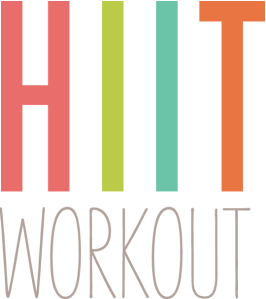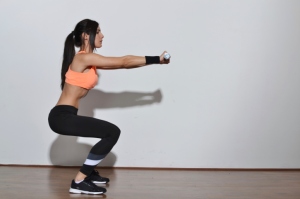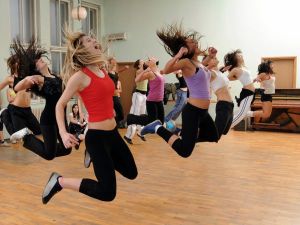Let me pose you a question: would you rather go down to the video store (if it hasn’t yet gone bankrupt) to hire a DVD, or stream it from the comfort of your own home? You’ve probably answered: the comfort of your own home, unless of course you get all nostalgic about walking down the street to hire discs. I know I do!
Okay, okay, now let me pose you a further question: would you rather spend one hour exercising, or 30 minutes? Stop, don’t answer that just yet. What if I were to say that both workouts would give you equivalent results? Unless you’re a time wasting enthusiast, pain junky, or DOMS devotee you’re probably going to answer 30 minutes. Well a new (old) exercise regiment known as high intensity interval training (HIIT) is offering just that.
Yes, if you believe one of the internet’s many great fitness prophets, then you will be aware that HIIT is the shit! Slow endurance training is the DVD for hire and HIIT is Netflix, which is of course, the shit. So is HIIT truly the shit, or should you beware of false fitness prophets?
What is HIIT?
Before I answer your previous question. What is HIIT? Simply put, HIIT involves performing intervals of highly intense exercise followed by either complete rest, or low intensity exercise. The high intensity-low intensity combination seems to be the more popular of the two currently.
How about an example? Sure, here’s one. Let’s say running is your game. Your HIIT may involve a ratio of a one minute sprint, to 45 seconds of slow jogging, repeated for a total of 15 minutes. It certainly doesn’t have to follow this exact ratio, or duration and these variables change greatly from protocol to protocol, that was simply an example. I should note, however, that scientific data to date has found minimal difference between different interval ratios thus far (9).
Why HIIT might be the shit?
HIIT is proposed to lead to multiple complex physiological changes to the skeletal muscle system that promote fat burning efficiency and preference, and more efficient oxygen utilisation. In turn, this is proposed to: make you skinnier, fitter and it will likely give you the ability to fly! But probably not the last one.
Science and HIIT (SHIIT):
Of course theory means little unless it translates to real world, real life changes. So, does it? Spoiler, it generally does.
Aerobic health:
A review paper analysing studies on individuals suffering from various different lifestyle diseases found HIIT to be effective. Specifically, cardiovascular fitness, as measured by Vo2 max, was 9% higher when individuals performed HIIT as opposed to moderate intensity continuous exercise (1). Another large scale review paper on scientific studies to date found HIIT to improve: aerobic fitness level more so than normal, moderate intensity exercise in both sedentary and active individuals. But it was only as effective as continuous exercise training in athletic persons (2). If that wasn’t enough science for you, a third study found HIIT to improve aerobic fitness as well as moderate intensity continuous exercise in a relatively fit group of people (3). This basically tells us that the lower your fitness level is, the better you will respond to HIIT and if you only want to do one sort of training, HIIT will be more effective than continuous training for aerobic fitness. Conversely, if you’re really fit and only want to do one form of exercise, then HIIT is as good as continuous moderate intensity exercise for aerobic fitness.
Muscles, muscles, muscles:
What about those muscles? Can you skip the separate weight sessions and do an all in one HIIT session? Well, the scientific data is very limited on this. But the one study that does exist on this topic, found that when having an active rest period was compared to having complete rest, complete rest won. Yes, complete rest led to greater work output, which in turn would likely mean improved: muscle mass, strength, power, looking shredded bro (4)! This makes sense and says that resistance training HIIT will likely provide you with some nice adaptations, but not as good as traditional weight training where proper rest between sets is taken.
Weight loss:
What about weight loss then? The data ain’t crystal clear on this. One study found HIIT boxing was better than continuous brisk walking at improving body fat percentage (5). Another study found participants had a decreased waist circumference following HIIT, but not following moderate intensity continuous exercise (6). Yet, in complete contrast, continuous moderate intensity exercise was found to decrease trunk fat more so than HIIT in another study (7). All in all, the science isn’t certain on whether HIIT or continuous training is best for weight loss. But if you base your workout on the number of calories you’re burning, based on average heart rate or a similar method, then you should be no worse off than performing continuous exercise, as average heart rate tends to be higher for HIIT and stays elevated for longer following exercise.
Adherence:
If HIIT is quicker to do, then you’d think people would do it more and stick to it. And they do! High intensity interval training led to a greater level of adherence (89% vs 71%) than moderate intensity continuous training (8). Grouse!
Is it healthful?
Ladies and gentlemen, HIIT is the shit! Or at least it is pretty darn good and very relevant to our time-centric society:
- HIIT is likely as good as endurance exercise for aerobic fitness and if you’re of a low fitness level it’s probably better.
- Resistance training HIIT won’t get you as ripped as traditional resistance training with structured rest periods. But it’s probably not a great deal worse.
- HIIT will lead to at least equivalent weight loss to continuous moderate intensity exercise in a shorter period of time, likely due to an elevated average heart rate.
- HIIT generally leads to higher adherence, so you’re more likely to stick with it.
Our verdict: Highly healthful. If you’re time poor and unfit, HIIT’s the most effective way to turn things around. Although if time is less of a factor and you really want to optimise your health you should combine HIIT, anaerobic exercise and aerobic exercise as part of a proper periodised program. Especially, if you have sport related goals.
I hope this has been healthful!






I’ve written about the benefits of HIIT and forms of HIIT many times (Tabata) and I totally agree! Absolutely brilliant article
LikeLiked by 1 person
Thanks, Kallum. Keep up the good work.
LikeLike
Interesting, though I do find that it’s becoming a bit of a trendy thing to do as well – ‘Jackson, are you doing HIIT? Oh my god, you aren’t doing it right if you’re not doing HIIT…’ etc etc etc. It’s important to bear in mind that people have been in phenomenal shape long before the advent of the HIIT wave. Not that I debate the science – I’m totally with it, but there’s very much a current wave of @”if it’s not HIIT then it must be SHIIT”, which is just so not cool. However you get your kicks and fitness hit, that’s what you should do. Good read!
LikeLiked by 2 people
Yeah, I couldn’t agree with you more. It’s certainly not the be all and end all and it’s way too trendy at the moment.
Thank you!
LikeLiked by 1 person
Great !!
LikeLiked by 1 person
Reblogged this on Is it healthful?.
LikeLike
So glad this re enforces everything I have Seen when researching methods.. I love HIIT and when on a busy schedule its brilliant for early morning quick exercise before work! And youre still burning calories after that intense 30mins!
Here is a HIIT routine for people to try using just a speed rope!
https://thebodyforum.wordpress.com/2015/06/15/hiit-the-ground-running/
LikeLiked by 1 person
Thanks, The Body Forum. Great workout you’ve put together. Keep up the good work!
LikeLike
Thanks, you too! And yeah you really have to compensate one for the other but thats dependant on your goals and preference! Great read for Pre-Saturday HIIT
LikeLiked by 1 person
It is worth mentioning though if you lice weights intensively with low rests and short bursts it mayyy be beneficial to opt for low intensit. to prevent injury and over working but also because it can be made unnecessary
LikeLiked by 1 person
Yeah valid point. I naturally tend to opt for a lighter intensity if I use this modality, but many probably wouldn’t. Cheers.
LikeLiked by 1 person
Dropping in the word science doesnt give it more credibility. Need references to the actual studies to see if its good or bad science.
Some definite errors in there, for example its been well established and even taught at degree level that lower intensity continuous exercise burns more fat. You say hiit burns more calories true sometimes and only over a few days as I can maintain moderate exercise like running for over 10 at a time but id never be able to sustain hiit that long or that frequent as I can run for hours and repeat everyday.
But low intensity users a higher ratio of fat to glycogen so more effective for fat loss than hiit as with a one off hiit you may use more calories but the ratio id more glycogen than fat so not a great deal of fat loss.
Which is why i can run 2 marathons back to back over mountains and burn in the region of 8000 calories plus without bonking because our bodies have a lot more energy as fat than glycogen. Because hiit uses more of the very limited glycogen youd bonk soon. Then at that effort i can continue to run each day after as i dont require as much rest as if doing hiit so if you look at the accumalation of weight loss of running 5 to 6 days a week for a month, an hour a time at easy pace you would burn more than you would doing hiit for 4 days a week over a month. Weight loss is not about one session but a longer time period. Its important to compare with cycling as there is a lot less resistance and not so much weight bearing you can have a much higher ratio of fat burn instead of glycogen than running so cycling would be far better at easy pace than hiit.
You dont get the endurance either as higher effort exercise builds fast twitch muscle fibres designed for going fast and easy exercise builds slow twitch muscles designed for going slow and long which is why usain bolt wouldnt be compititive in marathons. Which is why i see no half trained one hit wonders rocking the ultrarunning world, the cycling world or at ironman but instead i see guys doing 20 hours or more a week of mostly easy exercisr and only about 10% on average of their overall training is faster than race pace, youre kidding ur self to think you can half ur training and suddenly match an endurance athlete. Maybe you think of endurance as a half marathon but look at the elites banging out 2 hour marathons or running a hunred mountain miles in 16 hours and the theme in common is redicilous hours in training.
Now why fat loss and endurance are linked. If you have heard ofthe low carb high fat diet you will see how people are training their bodies as with the training the body makes further adaptations and they do this to be better endurance athletes snd that is long hours at easy pace eating higher fat diets and less of carbs which becomes your glycogen. The reason is that as always known endurance exercise prefers fat for energy and the more long and slow hours you do the more your body adapts and is more fat selective coupled with s reduction in your carbs intake and an increase of fat in take your body has no choice to get better at using fat as fuel which means you can run longer then faster as your body gets more efficient at burning fat and your body builds through many hours awesome endurance and you can go for a lot longer without bonking. Ive run 40 miles without bonking compared to the average at 18 to 22 miles and this is due to the adaptations made through my endurance training… long and slow and the guys i ran with that did far less hours and more hiit stuff because they felt time strapped and fell for the new industry fad finished hours behind. You dont blag an ultrarun.
I believe its become the new trend because the industry relies on people not achieving their goals as it would have little to offer and therefor learn if everyone were happy with weight fitness and health. Also think its so likeable by participants and instructors as instructors get to give you good news that it only takes 30 minutes rather than say weight loss and high level endurance takes hard work and many hours. It also means they can reduce session time, keep prices up and see more people per day while participant feels happy, falls for the mumbo jumbo jargon the psuedoscience that has flooded every media outlet from the only people who benifit from all this, the industry.
In regards to adherence in some respect its obvious, of course people adhere youve just advised them to half their training time or more. However, i notice many people give up or if adhere eventually lose enjoyment as its to hard to often, to keep a good state of mind its important to enjoy and todo so have easy sessions. Worse many who adhere end up burning out or over training as they may maintain it for a few months but yo much to hiit especially without sufficient mental and physical rest leads slowly and deceptively to burn out, seen it so many times and have been there many times. A world champion ultrarunner quoted that the mistake most amatuers make is training to often at to high an effort and that you should aim for 50% normal easy talking pace, the pace you just fall into naturally, 40% of training should be slower even than that and only %10 at higher effort levels and he said thats the difference between pros and no pros who do 50 to 60% easy normal then the rest higher than normal. People tend to think no pain no gain as if they need that bad feeling as evidence to themselves and for others that they have worked out, a sort of feedback system where as world champion ironman come coach wrote while training for ironman all sessions you should feel relatively good at the end, feel like you could keep going he said if you dont then youre over trained.
People are fallling for this fad for the same old reasons people usually do, their gullibility has been exploited by a easy fix all solution that sounds too good to be true.
Well you mentioned the word science a lot for credibility now i will do the same… science likes to say “if its too good to be true it usually is”
No offence lol this is not intended as an attack against you just a different perspective
LikeLike
Hi Shaun,
Thanks for the comment.
1. For every article I have mentioned there is a reference to a moderate to good quality scholarly article conducted on human participants. If you click on the hyperlinked numbers you will be able to find these. If you have ever read a scholarly article it will probably use a similar numbering system, only with the addition of a list at the end.
2. I would be highly concerned if any college program is teaching that training at a low intensity, in the so called fat burning zone, burns more overall fat and leads to greater weight loss than training at a higher intensity. This has been disproven multiple times and is an extremely outdated concept. Having spent seven years studying said concepts at both the undergraduate and postgraduate (doctoral) level, it is no longer taught. Google it and every single .edu, .org, other reputable source will mirror what I have said and give you the multiple, precise reasons.
3. Yes, HIIT doesn’t replace a well periodised training program in athletic populations and o haven’t said that. However, it is likely sufficient in the untrained and recreational sports people, particularly considering how time poor people are in this day and age.
4. I think you’re forgetting that HIIT generally involves a degree of active rest. Therefore, both arrobic and anaerobic adaptations will be taking place.
All the best.
LikeLike
Thank you so much for your fantastic posts. I’m in the process of becoming healthier and these types of posts are really fantastic. There is so much misinformation out there, I really appreciate your approach.
LikeLiked by 1 person
Thank you, Cilpa. Really, really appreciate the comment.
LikeLike
I’d be interested to see a report on training injuries related to various training regimes. While I definitely benefited from HIIT training when I was in poor shape, I found that who is doing the training really matters. One trainer I worked with had me doing things so much at the edge of my abilities that I often felt in danger of hurting myself. I gave up training with her and switched to more traditional training methods (although most everyone includes some HIIT style intervals in their aerobic classes these days thanks to Tabata’s research).
LikeLiked by 1 person
Hi Kit,
Thanks so much for the comment. Yeah really good point. The injury rate I suspect is higher with HIIT, although I have no paper to support that. The trainer you have I’m sure also makes a difference.
LikeLiked by 1 person